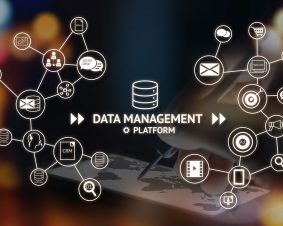 >
Spotlight November 2020: Nanotechnology in the public perception
>
Spotlight November 2020: Nanotechnology in the public perception
In November, we would like to draw your attention to a publication that examines public perception of the safety of nanomaterials in Austria.It shows, that although there is generally a rather positive attitude towards nanomaterials, there are different opinions on safety issues from different social groups. Further clarification seems necessary.
Despite the widespread use of nanomaterials in everyday life, consumer knowledge of the functions, benefits and potential risks of nanotechnology is still limited. As with any developing technology, their public perception has direct implications for future policy and needs to be taken into account by both academia and industry. Within the interdisciplinary research project “Nan-O-Style”, an online survey was conducted with an approach guided by the citizen science community. The main objective was to evaluate the current state of knowledge and attitudes towards nanotechnology in the general Austrian public and to determine how different socio-demographic factors can influence them.
Although Austrians generally have an optimistic and positive attitude towards nanotechnology, there are still concerns about its safety and possible risks. Participants expressed a strong desire for more information about nanotechnology and its applications, as well as for clear labeling and transparency of products containing nanomaterials. A consideration of various sociological factors was also made.
Original Publication::
Isabella A. Jouberta, Mark Gepperta, Stefanie Essa, Reinhard Nestelbacherb, Gabriele Gadermaiera, Albert Duschla, Arne C. Bathkec, Martin Himlya (2020) Public perception and knowledge on nanotechnology: A study based on a citizen science approach. NanoImpact 17. doi.org/10.1016/j.impact.2019.100201

Weitere Spotlights
Spotlight November 2021: Safe Materials from Scratch – Safe-by-Design in Materials Research
Advances in the field of materials science continue to amaze us with nanoscale materials with extraordinary chemical, electrical, optical, and numerous other properties. However, some nanoscale materials have different toxicological profiles compared to the same bulk material. Since safety issues are usually addressed just before launching a product into the market, safety issues may be […]
Read moreSpotlight August 2023: From principles to reality. FAIR implementation in the nanosafety community
In the August 2023 Spotlight, we present a paper that addresses the implementation of FAIR (Findability, Accessibility, Interoperability and Reusability) Data in nanosafety research. The authors introduce the new AdvancedNano GO FAIR Implementation Network (see also https://www.go-fair.org/implementation-networks/overview/advancednano/) established as part of the GO FAIR initiative. The paper highlights the AdvancedNano GO FAIR Implementation Network’s support […]
Read moreSpotlight August 2021: Towards FAIR nanosafety data
In August we would like to present a paper on FAIR data. The paper published in Nature Nanotechnology in June 2021 summarises the challenges and provides recommendations for the efficient reuse of nanosafety data in line with the recently established FAIR guiding principles: findable, accessible, interoperable and reusable. This article summarises the know-how on the […]
Read moreSpotlight February 2022: Probabilistic risk assessment – the keystone for the future of toxicology
The basics of toxicology are constantly being reconsidered, and the approach to risk assessment is therefore constantly being put to the test, because, as William Osler is cited in this publication, “Medicine (toxicology) is a science of uncertainty and an art of probability“. In this recent paper, the team around Thomas Hartung (Johns-Hopkins University/University of […]
Read more

